
Heavy-duty disposal containers for the large amounts of oil and grease. Photo by Brenda Verano
A new pilot program looking to tackle local water and ocean contamination as well as support almost 100 street vendors was announced on Thursday.
Beginning in January 2025, El Salvador Corridor vendors, the majority of whom are immigrants and Spanish-speaking women from El Salvador and Guatemala, will have access to heavy-duty disposal containers for the large amounts of oil and grease that are often used to cook some of the corridor's specialties, including yuca frita, pupusas and carnitas, among other delicacies.
Ricardo Lopez, who, along with his wife, is a corridor vendor of Salvadoran snacks, said he, along with the rest of the vendors, used to dispose of the oil and grease in the street drains or in plastic containers, which they would throw in the trash.
“We didn't have adequate knowledge about the handling of grease and oil waste,” he told CALÒ News. “These containers are going to be of great help because that was a big problem. We had too with community members who complained about the oils and spillage.”
The pilot program, officially known as the Fats, Oils, and Grease (FOG) Street Vendor Pilot Program, is a collaborative effort by Council District 1, where the corridor resides, and LA Sanitation and Environment (LASAN). The program will also provide an outreach/education program to the vendors along the corridor extending 14 blocks down Vermont Avenue between 11th Street and Adams Blvd in the Pico-Union area.
“This will provide more infrastructure for our street vendors,” Councilmember Eunisses Hernandez (CD-1) told CALÒ News. “This new infrastructure is just going to be right around the corner from them. They will be able to get rid of their oil and dump it there. Which hopefully is easiest for them because right now that doesn't exist at all. There's no place for them to dump this waste.”
El Salvador Corridor was officially recognized in 2010 by the state of California and by the city of Los Angeles in 2013 and today is one of the most populated street vending zones of the city.

Councilmember Eunisses Hernandez (CD-1). Photo by Brenda Verano
Although disposing of fats, oils and grease into containers will not be mandatory for vendors, Hernandez said this can be an initiative that could improve street vending zones. In addition to providing an opportunity for families to economically succeed, it can also be a space to maintain health and environmental standards and make L.A. a more environmentally driven city.
“Los Angeles is known worldwide for our vending economy and incredible food culture, but as a city, we have not invested in the infrastructure to adequately support vendors or neighborhoods,” Hernandez said. “I am proud to roll out this first-in-the-nation pilot program to bring an innovative solution to the disposal of cooking oils.”
Dr. Mas Dojiri, assistant general manager at LASAN, talked about the negative impacts of the improperly disposing of oil can have on Southern California’s bodies of water.
“Wastes and oils that are improperly disposed of into a drain that discharges into our storm drain system make their way into the storm drain and eventually pollute our water bodies,” Dojiri said.
Pollutants such as oil and grease can not only harm aquatic ecosystems and the natural environment and threaten the health and safety of people who enjoy recreating in our local water bodies but also lead to costly maintenance and repairs of the city’s storm drain systems.
“We have sampled and tested the runoff from this Piona Creek and Santa Monica Bay and found elevated levels of oil and grease and E. coli bacteria,” Dojiri said.
Santa Monica Pier has faced significant water quality challenges. According to environmental non-profit organization Heal the Bay’s 2023-202 Annual Beach and River Report, Santa Monica Pier was issued an “F” grade (from A-to-F grades) and was ranked the third most polluted beach among more than 700 beaches along the Pacific Coast.

City leaders unveilled the new pilot program on Thursday. Photo by Brenda Verano
In addition,baseline studies conducted by LASAN revealed grease concentrations in stormwater runoff from the area as high as 113 mg/L—well above the safety limit of 15 mg/L. E. coli levels were also found to be as high as 160,000.
"After the containers are installed and vendors start to use them, we'll [conduct these] tests again to see how effective this pilot program really is,” Dojiri said.
The containers will be available to use free of charge, and as demonstrated on Thursday, they are not hard to operate. Street vendors are recommended to use a separate container, preferably with a cover, to collect the FOG materials and to let them cool. After their container is full, they will then carefully pour the FOG materials into the city-provided labeled collection container. The process only takes a few minutes.

he city will monitor the larger container and a lead waste oil technician will transfer the waste in the containers to the trucks, part of JR Grease Services. Photo by Brenda Verano
The city will then monitor the larger container and a lead waste oil technician will transfer the waste in the containers to the trucks, part of JR Grease Services, a company providing grease traps, grease interceptors, plumbing and used cooking oil collection.
“Once the bigger truck is filled up, it gets taken to our facility in Long Beach, where we filter it and take the impurities out, and they use it as a byproduct of biodiesel and animal feed,” Miko Del Rosario from JR Grease Services said. “It's a win-win situation for everyone here because everyone's protected, and we're also repurposing the oil that we collect into bettering our future for everyone else.”
Doug Smith, senior director of policy and legal strategy at Inclusive Action, an economic justice organization, reminded the community that although theSafe Sidewalk Vending Act was signed into law by former CA Governor Jerry Brown in 2018, making street vending legal in the state of California, there are still certain conditions that tend to prevent many vendors from exercising this right.

Doug Smith, senior director of policy and legal strategy at Inclusive Action. Photo by Brenda Verano
“Six years ago, street vending was completely banned and considered a crime virtually everywhere in California, including here in Los Angeles. Today, thanks to the leadership of organized vendors and city leaders, many of those old policies of exclusion have been repealed, and new systems are in place to promote economic inclusion and protect immigrant vendors and their families from the devastating consequences of criminalization, but we're not quite there yet,” he said.
According to Smith, better policies need to be paired with new physical infrastructure in order to strengthen the contributions that vendors make to the city’s economy. “We shouldn't have to choose between economic justice for vendors on the one hand and public environmental health on the other. We deserve both and this pilot program is an important step in that direction,” he said.
In the coming weeks, vendors will be provided with educational tools on the containers and other health practices and know-your-rights tools.
”There's vending in every neighborhood in the City of L.A., and we have to do the work of making it a place where people can thrive. Not only the vendors but our community,” Hernandez said.
For more details on the FOG Pilot Program and supporting materials, visitlacitysan.org/fogpilot or click on the following resources:


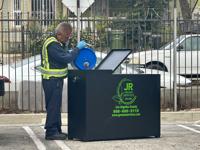

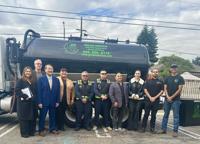

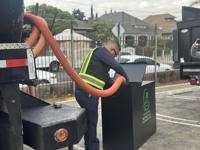



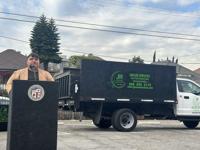







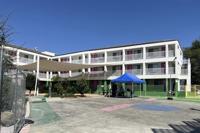
(0) comments
Welcome to the discussion.
Log In
Keep it Clean. Please avoid obscene, vulgar, lewd, racist or sexually-oriented language.
PLEASE TURN OFF YOUR CAPS LOCK.
Don't Threaten. Threats of harming another person will not be tolerated.
Be Truthful. Don't knowingly lie about anyone or anything.
Be Nice. No racism, sexism or any sort of -ism that is degrading to another person.
Be Proactive. Use the 'Report' link on each comment to let us know of abusive posts.
Share with Us. We'd love to hear eyewitness accounts, the history behind an article.